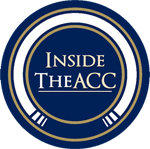The USA Today updated its database of reported athletic department revenues and expenses for the 2011-12 year. The database does not include private institutions, such as the ACC’s Boston College, Duke, Miami and Wake Forest (along with future ACC members Notre Dame, Pittsburgh, and Syracuse), and the numbers probably shouldn’t be trusted as absolute gospel. However, it does offer a glimpse into the current state of affairs of other conference programs. Below is a table of the eight public ACC programs in the USA Today database, along with Louisville.
[table id=3 /]
Florida State was highlighted by USA Today as one of 16 programs which reported a “self-sufficient” budget in 2011-12 but still received subsidy. Even when removing student fees, the Seminoles athletic department generated more than $92 million in revenue, $1.9 million more than they reported in expenses for the year.
The program’s total revenue increased from $78 million in 2011 to over $100 million in 2012. Contributions to the athletic department increased by $12 million, mostly to fund construction projects that increased buildings costs from roughly $12 million annually from 2005-2010 to $15-20 million each of the past two years. Florida State also saw a $9 million increase in rights licensing revenue. Florida State received a $7.8 million subsidy in 2011-12, an amount equal to 7.78 percent of their total revenue last year.
In fact, every ACC school in the database saw a significant increase in rights licensing revenue. The smallest increase belonged to Maryland, whose rights licensing revenue increased $4 million from 2011 to 2012 after seeing only a $2 million increase from 2006 to 2011. This is a result of the conference’s newest television deal, which should only generate more income as other members join the conference and the deal continues to be negotiated.
Per the Orlando Sentinel’s Coley Harvey, who has an excellent breakdown of Florida State’s portion of the USA Today database, construction costs decreased from $20 million in 2011 to $15 million in 2012, with projects being scaled back or put on hold. The school finished “in the black” due to money distributed in June. Certainly, if these increased revenue streams are expected to remain, those construction costs would increase as facilities are improved.
In terms of ticket sales, North Carolina generated the most revenue in 2011-12. North Carolina generated $23.7 million in ticket revenue for the year. UNC saw a slight dip in ticket revenues in 2011, but returned to $23 million for 2012. This could be a sign that, at least in terms of fan support, the program has weathered the worst of the NCAA investigation that led to considerable changes to the football program. North Carolina’s coaching salaries increased by $1.7 million in 2012, which can also be tied to the football program as Larry Fedora and his staff replaced interim coach Everett Withers.
Just behind North Carolina in ticket revenue was future ACC member Louisville, reporting $23.4 million in sales in 2011-12. That number is actually down from more than $26 million in ticket sales in 2010-11. With the success Louisville enjoyed in both football and basketball in 2012-13, those numbers should likely increase in future reports.
The USA Today report illustrates some of the struggles Maryland is facing as a program. The Maryland athletic department generated only $13.5 million in ticket sales and $11.5 million in contributions in 2011-12. The department receives $11.1 million in student fees, $6.1 million in school fees, and a $17.2 million subsidy to operate last year. That subsidy is equal to 25 percent of Maryland’s total revenues during the year, a considerably higher percentage than any of their current leaguemates.
Georgia Tech and Virginia join Maryland as programs that sold less than $15 million in tickets in 2011-12. However, Virginia benefits from having one of the largest contribution bases among the ACC programs. Virginia reported $30.7 million in contributions for the year, nearly matching Florida State’s total. Virginia also posted the highest amount of student fees of the reported ACC programs, with $13.1 million of revenue coming from student fees in 2011-12. That makes Virginia the only one of the nine programs to receive more income from student fees than ticket sales.
Student fees have funded a larger portion of athletic budgets throughout the state of Virginia. The Richmond Times-Dispatch notes that both Old Dominion and Virginia Commonwealth surpass Virginia in student athletic fees. Student fees are an intriguing portion of the revenue stream for athletics programs. Fans purchase tickets or donate to athletic programs strictly out of desire, but there are plenty of students helping to fund athletic programs at universities across the nation who will never attend a game.
Maryland’s student athletic fees increased significantly in the latest report. The $11.1 million figure is a jump from $9.5 million in 2010-11. Before this $1.6 million leap, the student fee portion of Maryland’s income has increased steadily from $7.2 million in 2005. Hopefully for students at Maryland, their move to the Big Ten will generate enough revenue to allow student athletic fees to decrease to a more reasonable amount.
SUBSCRIBE TO OUR MAILING LIST
Follow Inside the ACC on Twitter at @InsideTheACC. Like Inside the ACC on Facebook. Get your ACC links at ITA’s Daily NewsLink Page. Talk about ACC sports on the ITA Forums.


